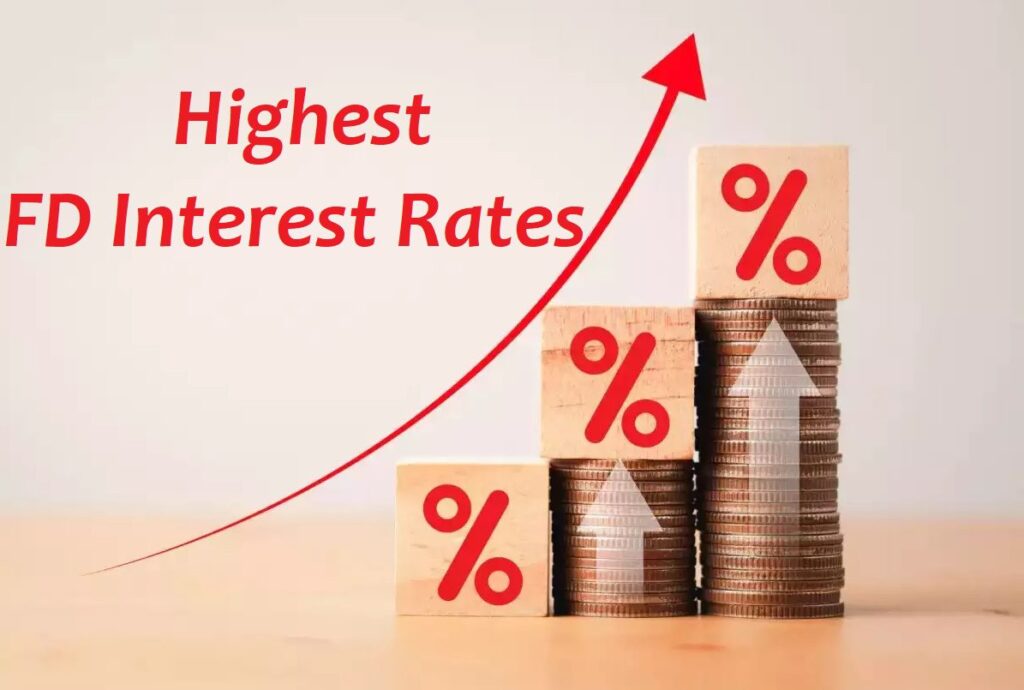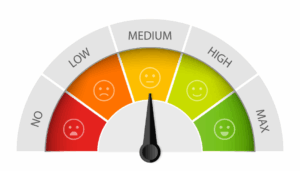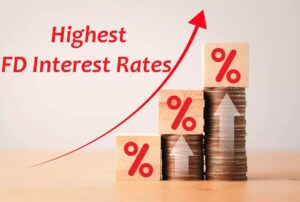
Fixed deposits (FDs) remain one of the most preferred investment avenues for risk-averse investors seeking capital protection, guaranteed returns, and predictable income. With multiple banks, NBFCs, and financial institutions offering various FD schemes, identifying the highest interest rate on FD and applying smart strategies can significantly improve returns while preserving safety. This article explores effective FD investment techniques, demonstrates how to calculate returns using an FD calculator monthly interest payout, and examines the role of tenure, payout frequency, and tax in shaping the actual income received.
Understanding the role of interest rates in FD returns
The interest rate offered on an FD is the single most important factor determining your returns. Higher interest rates directly translate into higher periodic payouts or larger maturity amounts.
For example:
- Principal: Rs. 10,00,000
- Tenure: 5 years
- Interest rate: 7% p.a.
- Annual interest = Rs. 10,00,000 × 7% = Rs. 70,000
- Total interest over 5 years = Rs. 70,000 × 5 = Rs. 3,50,000
- Total maturity = Rs. 10,00,000 + Rs. 3,50,000 = Rs. 13,50,000
Clearly, even a small difference in interest rates can result in substantial additional income over time.
Where to find the highest interest rate on FD
In 2025, typical FD rates offered by various institutions include:
- Public sector banks: 6.25% – 6.75% p.a.
- Private sector banks: 6.50% – 7.00% p.a.
- NBFCs (such as Bajaj Finance): 6.95% – 7.30% p.a.
- Senior citizens: Additional 0.25% – 0.35% premium on regular rates
NBFCs often provide the highest interest rate on FD due to their flexible funding needs while still maintaining AAA credit ratings, ensuring high safety standards.
Non-cumulative vs cumulative FDs
FDs can be broadly classified into:
- Cumulative FDs: Interest is compounded and paid at maturity.
- Non-cumulative FDs: Interest is paid monthly, quarterly, half-yearly or yearly.
For those seeking regular income, non-cumulative FDs with monthly interest payouts are preferred.
Using FD calculator monthly interest payout
Calculating expected returns manually can become complex when multiple factors are involved. An FD calculator monthly interest payout simplifies the process by factoring in:
- Investment amount
- Tenure
- Interest rate
- Payout frequency
Calculation example using FD calculator
Assume an investor deposits Rs. 15,00,000 for 5 years at 7.30% p.a. (offered by select NBFCs for senior citizens):
- Annual interest: Rs. 15,00,000 × 7.30% = Rs. 1,09,500
- Monthly payout: Rs. 1,09,500 / 12 = Rs. 9,125
Thus, the investor receives Rs. 9,125 monthly for 60 months.
For non-senior citizens at 6.95% p.a.:
- Annual interest: Rs. 15,00,000 × 6.95% = Rs. 1,04,250
- Monthly payout: Rs. 1,04,250 / 12 = Rs. 8,687.50
The FD calculator allows investors to experiment with various amounts and rates before investing.
FD laddering as a safe strategy
FD laddering involves splitting your investment into multiple FDs with staggered maturity dates. This strategy offers:
- Liquidity at regular intervals
- Protection from future interest rate fluctuations
- Opportunity to reinvest at higher rates when possible
Laddering example
Invest Rs. 30,00,000 as follows:
- Rs. 10,00,000 for 1 year
- Rs. 10,00,000 for 3 years
- Rs. 10,00,000 for 5 years
As each FD matures, funds can be reinvested at prevailing rates while the remaining FDs continue earning interest.
How tax affects FD returns
Though FDs offer guaranteed returns, interest earned is fully taxable under ‘Income from Other Sources’ as per your income tax slab.
- TDS applies when annual interest exceeds Rs. 40,000 (Rs. 50,000 for senior citizens).
- TDS rate: 10% if PAN is submitted, 20% if PAN is not available.
TDS calculation example
If annual interest from an FD is Rs. 1,20,000:
- Taxable interest: Rs. 1,20,000 – Rs. 40,000 = Rs. 80,000
- TDS @ 10% = Rs. 8,000
- Net annual interest received: Rs. 1,12,000
Tax liability doesn’t end with TDS, as your total income may place you in a higher tax bracket, requiring additional tax payments.
How to minimise tax liability on FD interest
- Submit Form 15G (for individuals) or Form 15H (for senior citizens) if total income is below the taxable limit.
- Spread deposits across multiple banks to stay under TDS thresholds at each bank.
- Use joint accounts to distribute tax liability among family members with lower incomes.
While these strategies can reduce upfront TDS, full interest income must still be disclosed in the income tax return.
Safety of FD investments at higher rates
- Public sector bank FDs: Backed by government with minimal risk.
- Private banks: Regulated by RBI; generally safe for reputable institutions.
- NBFCs: Many top NBFCs are AAA-rated and regulated by RBI, offering high safety.
While NBFCs offer the highest interest rate on FD, they carry slightly higher risk than public sector banks but remain safe for top-rated institutions.
Special consideration for senior citizens
Senior citizens benefit the most from FD investments due to:
- Higher interest rates (often 0.25% to 0.35% higher than regular rates).
- Higher TDS exemption limit of Rs. 50,000.
- Eligibility to submit Form 15H to avoid TDS deductions entirely if total income is below taxable limits.
Summary
Identifying and investing in the highest interest rate on FD allows investors to maximise returns while preserving safety. For instance, investing Rs. 15,00,000 for 5 years at 7.30% offers monthly payouts of Rs. 9,125 for senior citizens, calculated easily through an FD calculator monthly interest payout. Strategies like FD laddering, joint accounts, tax declarations through Form 15G/15H, and splitting deposits across institutions can enhance returns and minimise tax deductions. While NBFCs offer higher returns, careful selection of AAA-rated institutions ensures safety alongside higher income potential, making FDs a reliable component of any balanced investment portfolio.
Disclaimer: This article is intended for informational purposes only. Individuals must carefully assess all advantages, disadvantages and risks before participating or investing in the Indian financial market.




